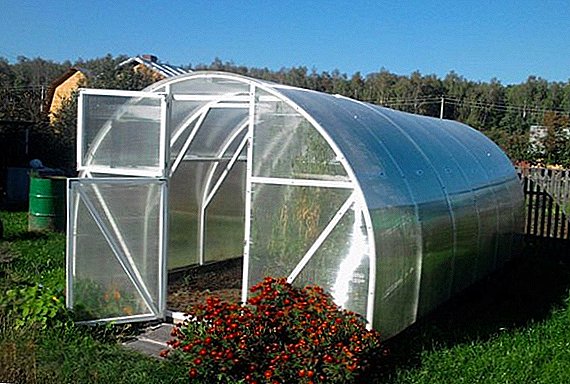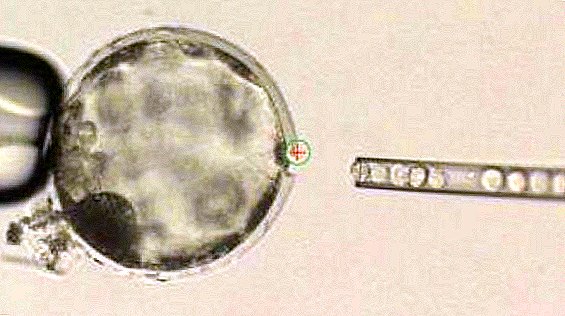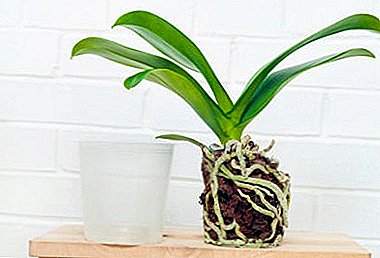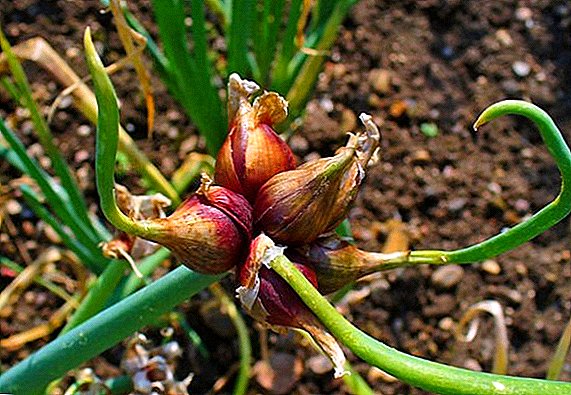 Growing on your own ficus sill provides special care for the plant. He needs watering, fertilizer feed, as well as a special microclimate characteristic of the natural habitat. However, do not forget about the timely transplanting. A cramped pot can cause the withering and pathologies of the ficus root system, which directly affects its viability. Therefore, today we will consider this issue as widely as possible, as well as determine the main subtleties of ficus transplantation.
Growing on your own ficus sill provides special care for the plant. He needs watering, fertilizer feed, as well as a special microclimate characteristic of the natural habitat. However, do not forget about the timely transplanting. A cramped pot can cause the withering and pathologies of the ficus root system, which directly affects its viability. Therefore, today we will consider this issue as widely as possible, as well as determine the main subtleties of ficus transplantation.
Ficus transplant
Transplanting is a rather painstaking and delicate process, as the ficus is very sensitive to any changes. Even a slight damage to a plant can cause its death, which is why it is necessary to start the process in exceptional cases, or in case of age.
How often to replant a plant: a planned transplant
Ficus transplantation should be carried out according to plan, systematically and according to his age. This makes it possible not only to improve its growth and development, but also to avoid serious plant diseases in the future. Therefore, buying a ficus in the store, do not be lazy to find out its exact age, which will certainly help in the future. 
Did you know? In the natural environment, ficuses are able to grow to gigantic sizes. In the wild, in a humid equatorial climate, this plant can grow up to 40 m in height, with a trunk diameter of about 5 m.Often transplants are performed according to the following generally accepted rules:
- Young plants with an age of 4 years or less are transplanted annually, since at this stage they double in size for 1 year.
- After 4 years, the growth process of ficus is sharply inhibited, so it is transplanted into a new pot no more than once every 2-3 years.
- After 7 years, the plant fully stabilizes all the processes of growth and development. At this stage, a flower transplant is needed no more than every 5 years.

Consider the most popular types of ficus: Benjamin, lyre, rubber, and microcarp.
Reasons for unscheduled transplant
Unscheduled transplantation is carried out only in exceptional cases with acute need. This is often required if:
- the ficus was just bought, as in most cases the primary pots do not have all the necessary qualities for long-term maintenance;
- there was a need for breeding ficus;
- the plant was cramped in a pot. This can be determined by protruding the roots out through drainage holes;
- complete depletion of the soil is observed (the nutritional properties and the soil's ability to absorb water are sharply reduced);
- drainage replacement is required.
Basic rules for transplantation
Ficus transplantation is not a difficult task. This does not require special knowledge and skills, so almost everyone can cope with the task. However, in order for the plant to take root completely in the new substrate, it is necessary to create special soil conditions for it, and also to choose the garden container correctly. 
Did you know? In India, Benjamin Ficus is used for medicinal purposes. From the various parts of it, the local population is preparing special oil lotions for the treatment of bruises and bruises.
How to choose a soil
The most capricious ficus is precisely to the soil. It grows exclusively on fertile and light soils, with a large amount of easily accessible nutrients. Therefore, to get a beautiful and tall plant should be as carefully as possible to approach this issue. Substrates for various types of ficus must meet the following requirements:
- excellent moisture and vapor permeability;
- neutral or slightly acidic pH (6.5-7);
- The maximum number of all kinds of micro and micronutrients.

In addition, the age of the flower also dramatically affects the soil composition:
- the best choice for young plants will be a light and loose substrate;
- An adult ficus (5 years or more) requires a more dense and saturated, but at the same time quite loose soil.
Today, there are several approaches to providing ficus with the necessary substrate. The soil can be prepared with your own hands, or you can use special soil mixtures from flower shops for this purpose. Ficus is often transplanted into universal substrates with a complex content of all the necessary nutrients and compounds important for the plant body. For most amateur gardeners, this is an ideal solution, since this kind of soil reduces care efforts at times. 
There are many specialized mixtures for plants, but not every substrate is suitable for ficus. This plant is intolerable to excessive moisture, so soil mixtures with a high content of clay substances are contraindicated for it. Due to the stagnation of water in clay soils, there is a high probability of the appearance of various parasites in a flowerpot, which not only worsens the growth of a flower, but can also lead to its death. In addition, when choosing a universal soil without preliminary preparation of the soil mixture is necessary. To increase the lightness of the soil, many plant growers strongly recommend diluting such substrates with a small amount of sand (no more than 10% of the total mass).
Did you know? Ficus is a unique air purifier. This is one of the few plants that is able to efficiently absorb and dispose of toxic substances such as benzene, phenol and trichlorethylene.But, in order to grow a truly aesthetically valuable ficus, one cannot do without self-preparation of the soil mixture. Gardeners around the world noted that specially prepared substrates have the most beneficial effect on ficuses, which ultimately has a positive effect not only on the rate of its growth, but also on resistance to various environmental challenges. Such mixtures often consist of peat, sand, turf land, and leaf humus.
 Ficus soil mix
Ficus soil mixWhen transplanting ficus is very important to fulfill the requirements for the composition of the soil. Learn how to pick up the soil for ficus.To prepare a quality mixture, all you need is to mix all these ingredients in equal parts. But, for young plants and seedlings, a mixture consisting of equal parts of peat, leaf humus and sand is best suited. For flowers from 4 years should prepare a substrate of turf land, leaf humus and sand (1: 1: 1). Which of the above substrates you would not use, all the components of the soil mixture should be thoroughly mixed, in the end result the substrate should look like a light and homogeneous mass.
In addition, if you decide to prepare the soil yourself, all its components should be disinfected. For these purposes, both high-temperature and low-temperature sterilization are used. High-temperature sterilization is carried out by heating the components of the substrate in a special oven or oven at a temperature of + 110-120 ° C for 45 minutes. In this case, both individual sterilization of all components and disinfection of the finished mixture are allowed.  Soil sterilization
Soil sterilization
Important! Soil disinfection is an obligatory stage of preparation of the substrate, as the microflora contained in the soil can lead to serious diseases and even the death of ficus.Low-temperature sterilization is carried out by freezing. To do this, the substrate or its individual components are frozen in a kitchen freezer or other devices at a temperature of -20 ° C for 2-3 cycles, each lasting 12-14 hours. In this case, it is possible to almost completely eliminate all pests, as well as dangerous bacteria. However, if the sampling of the components for the substrate was carried out near areas with complex agrendones, soil freezing becomes ineffective, since such soil compounds are often infected with spores of many fungal diseases resistant to low temperatures.
Read about the most popular methods of reproduction of ficus at home.
Pot requirements
Ficus fit almost any garden containers. You can buy them both in specialized garden stores, and in ordinary supermarkets. However, standard flower pots made of plastic or ceramics are best for this plant. You can create a pot with your own hands; for this, use small plates or moisture-resistant plywood. But often, garden containers for ficus are made independently only if the root system of the plant exceeds the maximum possible size of standard pots. 
The shape of the container for a plant can be varied, but containers with standard width and height, slightly tapered at the base, are best suited for this purpose. But still, the height should be within 1 / 3-1 / 4 of the height of the plant itself. If you decide to grow a plant in the style of bonsai (to conduct regular special pruning), then the pot can be a little lower and wide.
Important! Ficuses should be grown in tight containers, so each new pot in diameter should be more than the previous one by no more than 4 cm.
Do I need drainage?
Good drainage is mandatory for growing ficus plants, as this plant does not like excessive moisture. Despite the fact that the soil in the pot should always be wet, excessive watering can lead to rotting of the root system. Also, excessive moisture can lead to a powdery mildew and other pests on the ficus. 
In addition, do not forget that the drainage contributes to the natural aeration of the soil, without which the successful development of the plant is not observed. Therefore, in addition to the drainage hole in each pot should be sure to lay a drainage layer of coarse-grained materials with a height of 2-3 cm, which you need to fill the top with a layer of sand in 1 cm. Best for these purposes fit:
- expanded clay;
- small pebbles;
- seashells;
- finely crushed brick.
It will be useful for experienced flower growers to learn how to use lights for indoor plants, how to arrange watering of flowers during the holidays, how to feed indoor plants and what fungicides are used in indoor floriculture.
How to transplant ficus: step by step instructions
In order to transplant the ficus into a new pot, special knowledge is not required, but the process still has technological subtleties and secrets. Not only the success of the final result, but also the subsequent successful development of the ficus depends on their proper observance. Therefore, before proceeding with the change of the next pot, it is necessary to get acquainted with all the features of transplanting this plant. 
Ficus transplantation consists of the following stages:
- Approximately one day prior to the proposed transplant, the plant must be watered abundantly, this will help the soil to remain whole, which preserves the integrity of the root system.
- Transplantation begins with the preparation of the soil mixture and the pot, for this purpose, the prepared soil, or independently prepared soil, it is necessary to sift through a fine sieve. A drainage layer of 2-3 cm of expanded clay, pebbles, etc. should be placed in the pot, which should be covered with a layer of pure sand 1 cm thick. Above the drainage layer, to level the future height of the ficus, you need to firmly lay fresh soil.
- Then you can proceed to the removal of the contents of the old container. To do this, the pot should be slightly tapped from all sides, and then carefully remove the soil along with the root system.
- Before being placed in a new container, the roots of a plant must be inspected for the presence of pathologies. Healthy roots should be without any rotten lesions, have a coffee, yellow or cream shade. Affected parts must be trimmed with a garden pruner and, if necessary, treated with special solutions.
- After a thorough examination, the plant is ready for placement in a new pot, for this it is installed exactly in the center of the tank, after which all voids are tightly filled with fresh soil.
- After transplantation, the plant is placed on a permanent place in the room and provide him with appropriate care.
This method of transplanting among gardeners is known as "transshipment". Its main advantage is the minimal amount of damage to the plant, as a result of which its instantaneous acclimatization in the new tank is observed. However, if you are transferring the ficus to the first permanent pot after purchasing it in a store, the "transfer" is not suitable for this.  The transplant should be as follows:
The transplant should be as follows:
- First, a young plant about a week after the purchase is kept in the room for acclimatization.
- Approximately one day before the estimated date of transplantation, the plant must be watered abundantly to soften the soil in a flowerpot.
- Immediately before transplanting prepare the soil and the pot. The soil is sifted through a fine sieve, a drainage layer of 2-3 cm pebbles, gravel, etc. is placed on the bottom of the pot, over which 1 cm of sand is laid.
- Next, remove the plant from the old capacity. For this, it is slightly tapped from all sides, after which the plant is withdrawn along with the substrate.
- The old substrate must be removed, for this a thin wooden stick must be carefully cleaned from the root system, after which it should be washed in water at room temperature.
- Before planting in a permanent pot, the root system should be inspected for the presence of various pathologies, after which, if necessary, cut off all damaged roots.
- The cleaned plant is placed in the center of the new pot, after which the root system gently but firmly covers the root system with new soil. At this stage, damage or excessive bending of the roots should be strictly avoided, as this may lead to their rotting and death of the ficus.
- After transplantation, the plant is placed in a permanent place and provide appropriate care.

Important! During the transplantation of the ficus, it is strongly recommended not to deepen or overestimate its root collar, as this can lead to a prolonged recovery of the plant after the procedure or even to serious diseases.
Plant care after transplanting
During the first few weeks, the transplanting field of the plant shows a special, gentle care regimen, as its body was subjected to tremendous stress during the procedure. Therefore, in order to ensure that it is properly adapted, it is imperative to use the following recommendations:
- Pot should be kept away from drafts, possible temperature drops and direct sunlight, as this may worsen the general condition of the ficus.
- The most favorable temperature for the plant during this period is + 19-22 ° C.
- Watering the plant should not be excessive. It is best to moisten the soil periodically, with a small amount of water and only in the case of a slight dry crust. However, the foliage should be moistened 2-3 times a day with a spray bottle.
- The first 4 weeks to feed the ficus fertilizer is not recommended.

To create more comfortable conditions for adaptation and speed up the process, the plant can create light greenhouse conditions. For this, the pot is completely closed in a tight and transparent plastic bag. Then within 1-2 weeks the ficus is plentifully sprayed with a spray, not forgetting about periodic greenhouse airings 2-3 times a day for 10 minutes. After that, the pot can be placed on a permanent place.
If you want your ficus for a long time to please his healthy appearance, read about the rules of watering ficus.Proper transplantation is a pledge not only a mandatory component of high-quality care for ficus, but also the main condition for its longevity. Therefore, the process must be approached with special attention. The plant requires nutrient-rich, but light soil, strict adherence to all the subtleties of the transplant process, as well as special care in the subsequent adaptation period. Only in this case, the breeding of ficuses will not only be a simple exercise, but also give a lot of positive emotions.
Video: ficus transplantation
Reviews from the Internet on how to transplant a ficus

Spray the leaves twice a day with slightly warm water (neatly). And put a package on the plant to reduce the evaporation of moisture - a mini greenhouse. Those. the scheme is this: sprayed in the morning (no need to pour it, neatly with a fine spray). They stuck a couple of knitting needles at the edges of the pot, or chopsticks (above the plant itself), and put a bag on these needles. So that it does not come into contact with the leaves. In the evening they took the package for half an hour-hour. And again: sprayed, clothed, etc. Air and spray 2 times a day - no less. How much to keep under the package depends on how quickly the root is restored - maybe a couple of weeks - you yourself will see how the plants feel, and the earth will start to dry out.













